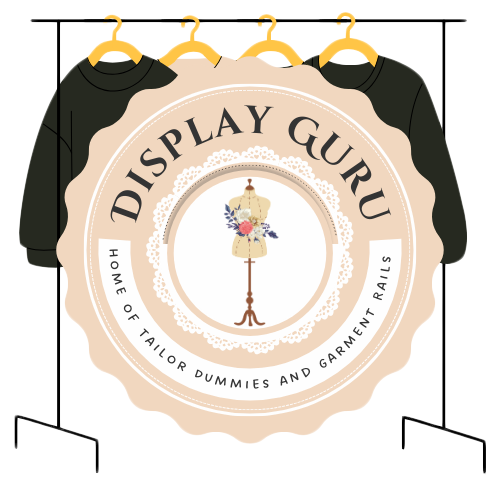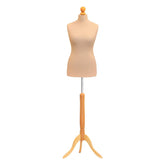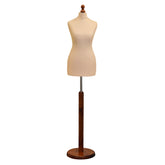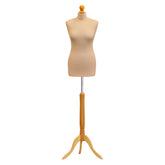Retail Display Stands That Actually Drive Sales
Why Your Store Needs Display Stands That Work
It's a common mistake for retailers to see their product displays as simple furniture—just shelves to hold stock. But the most successful shop owners know a powerful secret: every retail display stand is a silent salesperson. It works around the clock, guiding customers, influencing their choices, and turning casual browsers into committed buyers. These displays don't just hold products; they create an engaging shopping experience, introducing people to items they never even knew they wanted. The right setup can transform a passive walk-through into an active journey of discovery.
This change in mindset—from seeing a display as a product holder to a strategic marketing tool—is what separates a stagnant sales floor from a thriving retail space. Think of two bookshops. One simply stacks its new releases in a pile on a table. The other uses a tiered, well-lit display near the entrance, showcasing a "Staff Pick of the Month" with a short, handwritten review. The second shop isn't just selling a book; it's selling an experience and a trusted recommendation. This builds an emotional connection that directly drives sales. Treating your displays with this level of thought is fundamental.
The Psychology Behind a Great Display
So, what makes some displays practically magnetic while others are invisible? The answer lies in understanding the subtle psychological triggers that shape a shopper's behaviour. A well-designed display does more than just show an item; it tells a story, solves a problem, or sparks a flicker of curiosity.
Here are the key psychological factors at play:
- Visual Hierarchy: Our eyes are naturally drawn to what stands out. Effective retail display stands use height, colour, and lighting to create a focal point, directing a customer's gaze straight to high-margin or featured products. A cluttered, flat display just confuses the eye and gets ignored.
- Implied Scarcity and Urgency: A neatly arranged dump bin with a sign that reads "Limited Edition - While Stocks Last" creates more urgency than a perfectly organised, fully stocked shelf. It hints that the items are popular and won't be around for long, encouraging an immediate purchase.
- The Power of Touch: Displays that invite customers to pick up and interact with a product are far more effective. Research has shown that allowing customers to touch an item can increase their sense of ownership and their willingness to buy. This is why countertop units for testers or small gadgets are so powerful.
More Than Just a Stand: A Financial Engine
Putting money into effective displays isn't an expense; it's a direct investment in your bottom line. Poorly chosen or neglected displays are a silent drain on potential revenue, costing you sales every single day. The impact of strategic point-of-purchase (PoP) displays is so significant that it has become a major market in its own right.
The UK PoP Display market, a key segment of the retail display stand industry, is projected to grow from around USD 640.9 million in 2023 to an estimated USD 1,436.2 million by 2032. This remarkable growth shows just how seriously successful businesses are taking their display strategies. You can read more about the UK's growing Point of Purchase display market here. By understanding these principles, you can turn your display stands from passive fixtures into your most valuable sales tools.
Finding Your Perfect Display Stand Match
Choosing the right type of retail display stand is a crucial decision. Making the wrong choice is like wearing hiking boots to a formal dinner—it just doesn't fit the occasion and can be off-putting. Not all stands are built the same, and your selection can either invite customers in or accidentally push them away. To pick a winner, you need to look beyond simple aesthetics and think strategically about what each type of stand is designed to accomplish in a retail space.
The ultimate goal of any display is to improve your business's performance. As this infographic shows, the right stands can boost sales by first grabbing attention, increasing foot traffic, and making your brand more visible.
This simple hierarchy shows that visibility and customer movement are the building blocks that lead to the final goal: more revenue. Let’s explore the main types of stands to see how they help you achieve this.
The Heavy Hitters: Floor Displays
Floor displays are the workhorses of the retail world. These are large, freestanding units built to command attention and stop shoppers in their tracks. Think of them as the main attractions of your store. They are perfectly suited for launching new products, highlighting seasonal collections, or creating an immersive brand experience.
Because of their size, floor displays are fantastic for:
- Creating a "Shop-in-a-Shop": A well-designed floor unit can act as a mini-boutique within your larger store. It groups related products to encourage customers to buy multiple items. For example, a clothing store could use one large display to showcase a complete outfit—trousers, a shirt, a jacket, and matching accessories—all in one convenient spot.
- Guiding Customer Flow: When placed at the end of an aisle or in an open area, these displays act like signposts. They direct the flow of traffic through your store and ensure customers see key product areas they might otherwise miss.
However, their size can also be their biggest drawback. In a smaller shop, a bulky floor display can create bottlenecks and make the space feel cramped. They represent a notable investment in both cost and floor space, so their placement requires careful planning.
The Impulse Buyers: Countertop Displays
If floor displays are the main course, countertop displays are the tempting desserts. These small, strategically placed units sit right at the point of sale—your checkout counter—to capture those vital last-minute impulse buys. Their entire purpose is to present low-cost, high-margin items that customers can add to their basket without a second thought.
Countertop displays are extremely effective for items like sweets, batteries, gift cards, or small cosmetic products. A bookshop owner might use a small rotating stand next to the till for bookmarks and reading lights. The key here is convenience and visibility. The product must be easy to see, easy to grab, and easy to add to an existing purchase. They take up very little space but can generate a surprisingly high return when stocked with the right items.
The Specialists: Gondolas, Mannequins, and Spinners
Beyond the two main categories, several specialised retail display stands are designed for specific products and purposes. Gondola shelving is the most common type of shelving in supermarkets and department stores, offering incredible versatility for a wide range of goods. Spinner racks are perfect for items like postcards, magazines, or accessories, allowing customers to browse a large selection within a small footprint.
Mannequins and body forms are perhaps the most specialised of all, acting as silent models for clothing. They do more than just hold garments; they show customers how an item is meant to fit and how it can be styled. This provides essential context that a simple hanger just can't offer. For fashion retailers, knowing how to use these forms is fundamental. If you're looking to master this, our complete guide to using a mannequin with a stand offers more detailed advice.
To help you decide, here is a quick comparison of the different display types and where they work best.
Display Stand Types: What Works Where
A practical guide showing which display stand types work best for different products, store sizes, and customer behaviors.
| Display Type | Best Products | Store Size | Setup Time | Investment Level |
|---|---|---|---|---|
| Floor Displays | New launches, seasonal items, full outfits, large electronics | Medium to Large | 30-60 mins | Medium to High |
| Countertop Displays | Sweets, gift cards, batteries, small accessories, cosmetics | All Sizes | 5-10 mins | Low |
| Gondola Shelving | Groceries, packaged goods, general merchandise | Medium to Large | 1-2 hours+ | High |
| Spinner Racks | Postcards, magazines, jewellery, keychains | Small to Medium | 15-30 mins | Low to Medium |
| Mannequins | Clothing, fashion accessories, jewellery | All Sizes | 10-20 mins | Medium |
Matching the right display to your specific product is the first step toward creating a setup that truly connects with customers and drives sales. By understanding the strengths of each type, you can build a more effective and profitable retail environment.
Materials That Last (And Look Great Doing It)
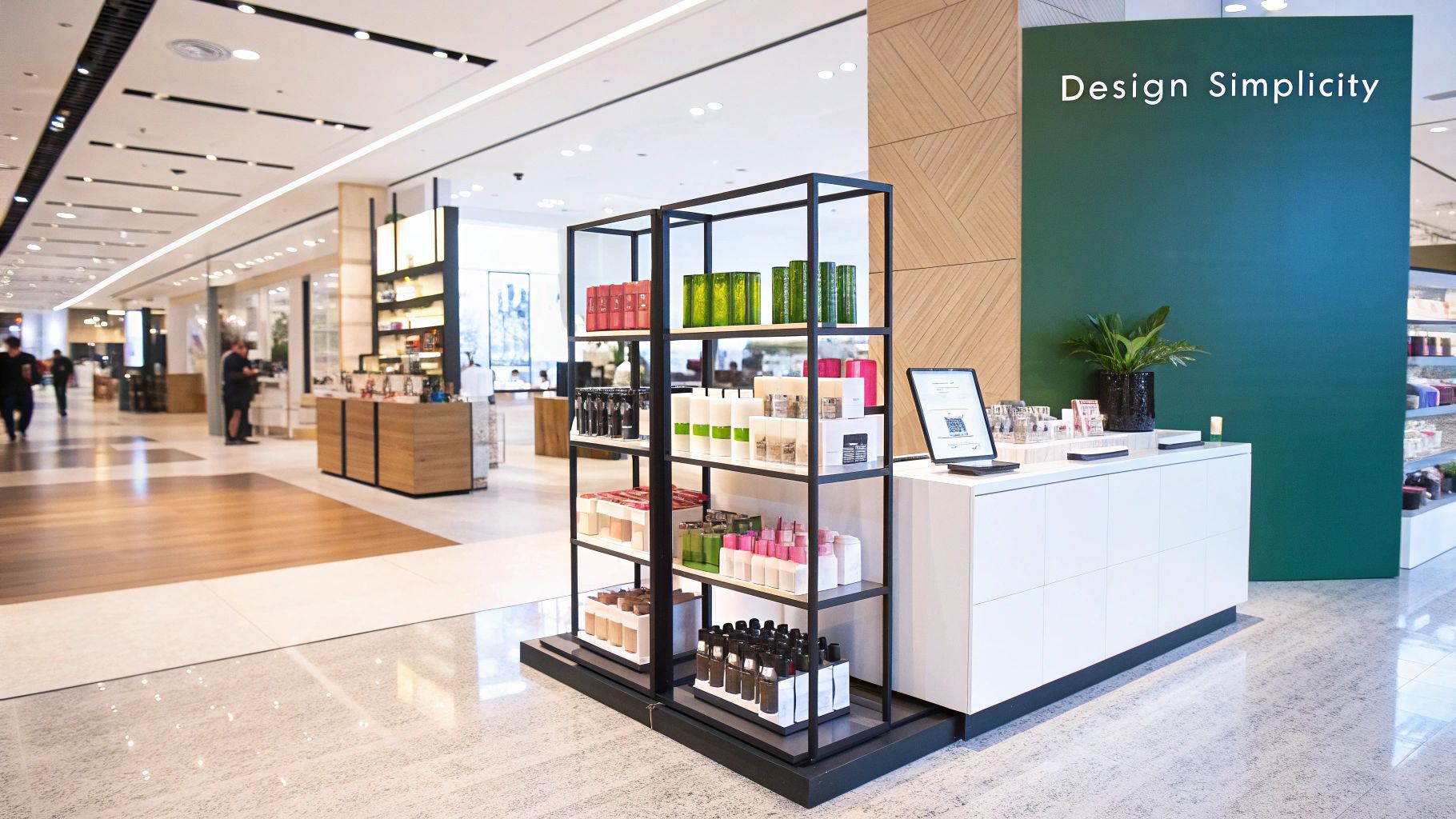
The material you choose for your retail display stands says a lot about your brand, often before a customer even handles your products. Imagine a luxury handbag presented on a flimsy plastic stand; the display sends a confusing message that undermines the item's quality. Opting for the cheapest material can quickly become the most expensive decision, as it will likely suffer from wear and tear and need replacing often. The right material, on the other hand, is a lasting investment that holds its appearance and reinforces your brand’s dedication to quality.
This choice is about more than just durability; it shapes how customers perceive your products. Studies on consumer behaviour show that shoppers link natural materials like wood with authenticity and higher quality, while some plastics can feel cheap. The stand’s material becomes part of the product’s story. Selecting materials is less about the initial cost and more about creating a solid foundation that supports your entire visual merchandising plan.
The Classics: Wood and Metal
Wood and metal are the dependable workhorses of retail displays. They are consistently chosen for their durability and their ability to project a specific brand identity.
- Wood: Wooden displays offer a sense of warmth, authenticity, and timeless charm. Lighter woods such as pine or birch can achieve a modern, minimalist Scandi aesthetic, whereas darker woods like walnut or mahogany communicate tradition and luxury. Wood is incredibly adaptable but does need looking after, as it can be prone to scratches or water damage in busy areas if not correctly sealed.
- Metal: For a sleek, industrial, or contemporary look, metal is a superb choice. Steel and aluminium are exceptionally sturdy, making them ideal for heavy-duty clothing rails or shelving units built to hold substantial weight. Metal can be powder-coated in any colour to align with your branding, giving you both strength and customisation options. Its primary downsides can be its weight and the potentially cold impression it gives if not balanced with warmer materials.
The Modern Contenders: Acrylic and Composites
As retail design has changed, so have the materials used for creating displays. Today's options provide unique advantages that traditional materials can't match.
Acrylic, often known by trade names like Perspex, gives a clean, modern look that puts all the attention squarely on the product. It’s lightweight, shatter-resistant, and can be formed into nearly any shape. This makes it perfect for creating bespoke retail display stands for items like cosmetics, jewellery, or electronics. Its transparency also helps create a sense of open space, a significant benefit in smaller shops.
However, high-quality acrylic can be susceptible to scratches if not treated with care, and cheaper versions might yellow over time. It’s a material that looks brilliant when new but requires consistent maintenance to preserve its clean appearance. For clothing retailers, a blend of materials, such as a fabric-covered torso on a solid wooden base, provides a great mix of style and stability. For an example of this in action, take a look at this classic dressmaker's dummy with a white wood base.
Digital Displays: Beyond The Hype
Talk of digital integration in retail can feel like a lot of noise. When used thoughtfully, however, digital elements can turn a static retail display stand into an active part of the customer's journey. Today's digital displays are much more than flashy screens; they can update content from afar, respond to shopper behaviour, and create interactive moments that a simple stand cannot. The skill is in choosing genuinely useful technology over expensive distractions.
When retailers get it right, the results are powerful. Picture a cosmetics counter where a screen next to a lipstick display shows a video of someone applying that exact shade. Or a clothing rack where a small tablet lets a shopper see the item on different-sized models or in various colours. These aren't just novelties; they deliver useful information right when a customer is deciding. This changes the display from a passive product holder into an active sales assistant that offers personalised content to help secure a sale.
Practical Steps for Going Digital
Adding digital displays involves more than just plugging in a screen. Success is built on careful planning that considers the practical side of running a physical shop. Many retailers miss these key details, only to find their expensive new tech gathering dust.
Here are the main things to think about:
- Power and Placement: Every digital screen needs electricity. Before you buy, figure out exactly where your display will go and how you'll power it safely without creating trip hazards from trailing wires.
- Content Management: Who will create the videos, images, or interactive content? How will it be kept up to date? Many modern systems use cloud-based software, letting you change what’s shown across multiple shops from one central computer. This is a massive plus for seasonal promotions or stock changes.
- Ongoing Costs: The initial price is only one part of the budget. You also need to factor in potential software subscriptions, maintenance, and the staff time needed to manage the content.
Is It Worth the Investment?
For many businesses, the answer is a clear yes, as long as the strategy is sound. The growth in this field points to its recognised value. The UK digital signage market, a major component of modern retail display stands, hit a market size of USD 939.92 million in 2024. It is projected to grow to USD 1,547.98 million by 2033. This demonstrates strong industry confidence in digital communication inside stores. You can find more information about the growth of the UK digital signage market.
The secret is to begin small with a clear objective. Rather than redoing your entire shop, try putting one interactive display at a key point of purchase. Measure how it affects sales for that specific product. By concentrating on technologies that fix a real customer issue or improve the shopping experience in a meaningful way, you can make sure your digital investment adds to your business instead of just making it more complicated. This measured approach helps you learn what connects with your customers and build a digital strategy that delivers a real return.
Design Secrets That Convert Browsers Into Buyers
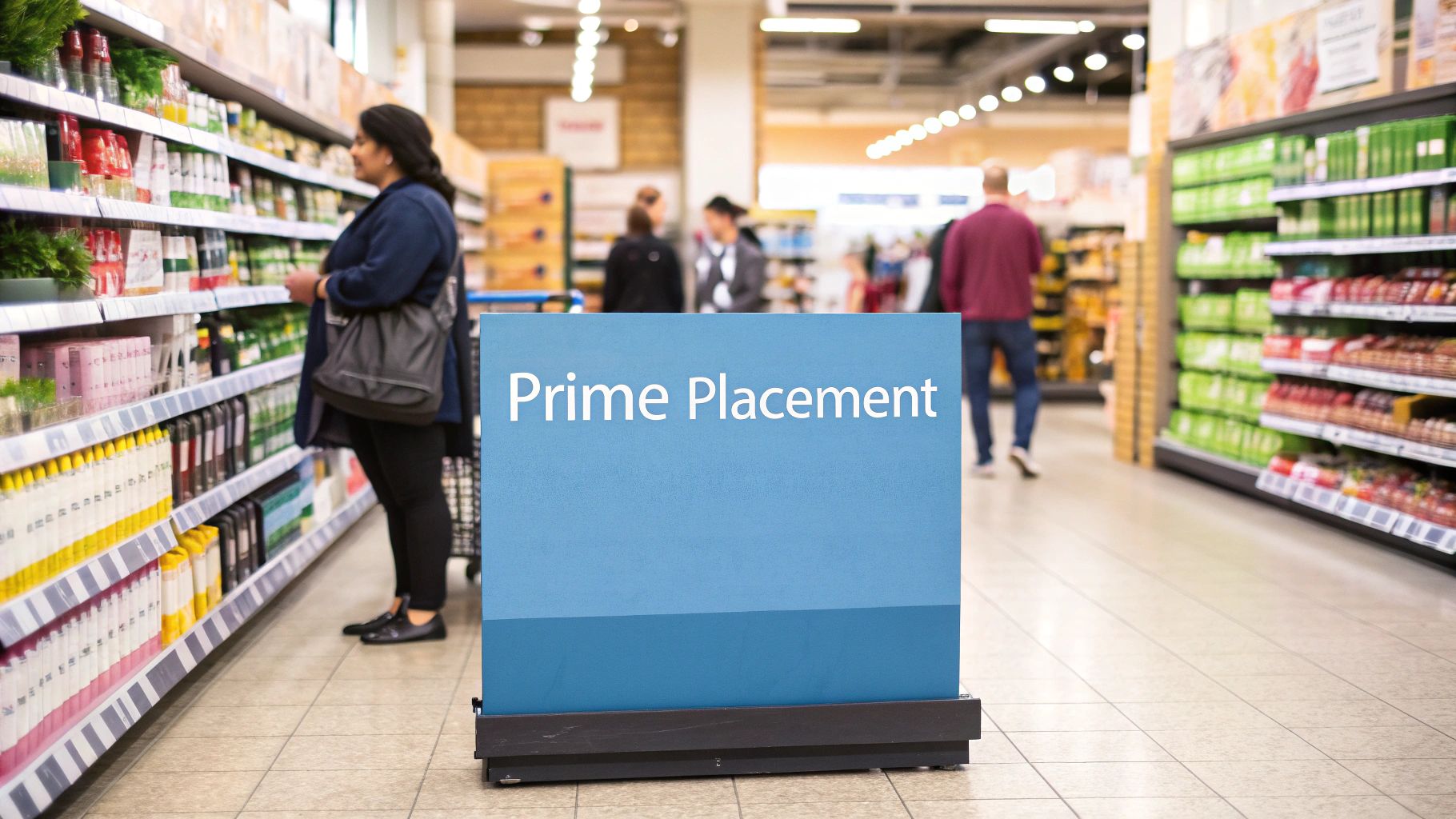 Effective display design isn’t just about making things look attractive; it’s a deliberate science. The most successful retail display stands are grounded in customer psychology, using visual cues to direct attention and influence purchasing decisions. Retailers who excel at this combine aesthetic appeal with proven principles that shape how shoppers move, what they see, and ultimately, what they choose to buy. This is what transforms a display from simple background decoration into an active sales tool.
Effective display design isn’t just about making things look attractive; it’s a deliberate science. The most successful retail display stands are grounded in customer psychology, using visual cues to direct attention and influence purchasing decisions. Retailers who excel at this combine aesthetic appeal with proven principles that shape how shoppers move, what they see, and ultimately, what they choose to buy. This is what transforms a display from simple background decoration into an active sales tool.
The foundation of great design is telling a clear and compelling story with your products. A display is more than a random assortment of items; it's a carefully curated scene. Think of it as setting a stage for a play. An unplanned display is like actors milling about without a script. In contrast, a well-designed one has a clear focal point, supporting characters (complementary products), and a message that tells the audience—your customer—exactly what to focus on. By understanding these design fundamentals, you can build displays that not only look fantastic but also deliver measurable results.
The Power of Visual Hierarchy and Flow
One of the most crucial design principles is visual hierarchy. This is the art of arranging elements to guide the eye to the most important piece of information first. In a retail setting, this means making your hero product the undeniable star of the show.
You can achieve this with a few simple yet powerful techniques:
- The Rule of Three: Grouping items in odd numbers, especially threes, is more visually engaging and memorable for the human brain than even-numbered arrangements. A display featuring three mannequins or three stacks of jumpers at varying heights creates a more dynamic and interesting focal point.
- Creating a 'Pyramid': Arrange products so the tallest item sits in the centre, flanked by shorter items on either side. This pyramid shape naturally draws the eye upwards to the main product before it scans the complementary items. It’s a straightforward method that brings order to potential clutter.
- Strategic Use of Negative Space: A crowded display is a confusing one. Don't be afraid to leave empty space around your key products. This ‘breathing room’ makes the items seem more significant and luxurious, preventing visual overload and helping customers focus.
Colour and Lighting: Setting the Mood
Colour is an emotional shortcut that communicates directly with your customers. Warm colours like reds and oranges can create a sense of urgency, often used for clearance sales. Cooler colours such as blues and greens project calmness and are excellent for promoting high-end, trustworthy products. The key is to select a colour palette that aligns with both your brand identity and the specific feeling you want to generate for a particular product line.
Lighting works in tandem with colour to create atmosphere and highlight key merchandise. A single spotlight on a piece of jewellery or a new handbag instantly elevates its perceived value. Backlighting can make a display pop, while soft, ambient lighting can create a more relaxed, boutique feel. When used together, colour and light transform a simple retail display stand into an immersive experience. A great example of thoughtful design can be seen in how retailers represent diverse body types; you can learn more about creating stylish and inclusive displays in our article on plus-size mannequins. These principles are universal, ensuring your message connects with every shopper.
Choosing Displays That Actually Fit Your Business
This is where many retailers stumble. It’s easy to be charmed by a display that looks fantastic in a catalogue but doesn't work with the day-to-day reality of your shop. Selecting the right retail display stands starts long before you browse options. It begins with an honest assessment of your products, customer habits, physical space, and budget. This structured approach ensures every display you buy is a strategic asset, not just another piece of furniture.
Too often, business owners overlook crucial details like customer traffic flow or the practicalities of seasonal changeovers. Picture a boutique owner investing in heavy, permanent fixtures, only to find they can’t adapt their layout for the Christmas rush. Or a delicatessen choosing elaborate shelving that is a nightmare to clean, creating a daily operational headache. These are costly, avoidable mistakes. By evaluating your options methodically, you can guarantee every purchase contributes directly to your business goals.
A Framework For Smart Decisions
Making the right choice means matching display features to your specific objectives. Are you aiming to increase impulse buys at the till? A countertop unit is perfect. Need to showcase a premium clothing line? A well-lit mannequin or a minimalist garment rail will elevate the products. If making the most of a small footprint is your priority, a multi-tiered or mobile display, like a portable clothing rack, offers essential flexibility. You can see how these adaptable units function in our guide on portable clothing racks.
This forward-thinking approach also improves your relationships with suppliers. When you have a clear brief, you can negotiate more effectively by asking specific questions about durability, modularity, and delivery times. It also prepares you for future growth; choosing a system that can be expanded later saves you from starting over when your business succeeds. This kind of planning is becoming more important as display technology advances. In fact, the UK Center Stack Display market, which covers many technologies used in retail, reached revenues of USD 320.3 million in 2024 and is expected to more than double by 2030. You can discover more about the future of commercial display technology.
Your Decision-Making Checklist
To bring all these elements together, it helps to use a structured framework. Before you commit to any retail display stands, ask yourself some critical questions. This checklist is designed to help you evaluate potential displays against your unique business needs, ensuring you're not just buying a stand, but investing in a solution.
| Evaluation Factor | Critical Questions | Deal Breakers | Nice To Have | How To Measure |
|---|---|---|---|---|
| Product Fit | Does the display properly hold and present my products? Is it the right size and shape? | Products don't fit securely; The stand's aesthetic clashes with the product's quality. | Highlights key features of the product; Complements product branding. | Physical test with sample products; Visual match against brand guidelines. |
| Space | Will it fit in my intended space without obstructing traffic? Can it adapt to new layouts? | Blocks main customer pathways; Too large/small for the designated area. | Mobile or modular for easy reconfiguration; Makes a small space feel larger. | Floor plan measurements; In-store mock-up or visualisation. |
| Durability | What is it made of? Can it withstand daily wear and tear in my specific retail environment? | Flimsy materials that will break easily; Unstable when loaded with products. | Scratch-resistant surfaces; Materials that are easy to repair or maintain. | Supplier material specifications; Customer reviews on longevity; Weight capacity tests. |
| Customer | Does it allow customers to interact with products easily? Is it at the right height? | Shelves are too high or too low; Access to products is restricted. | Encourages touching and testing products; Catches the eye from a distance. | Observe customer behaviour with existing displays; Ask for informal feedback. |
| Operations | How easy is it to assemble, clean, and restock? Can my staff manage it efficiently? | Difficult or time-consuming to clean; Requires special tools for assembly. | Quick to restock during busy periods; Lightweight enough for one person to move. | Time trials for cleaning and restocking; Assembly time provided by the supplier. |
| Budget | Does the total cost (including delivery) fit my budget? What is the long-term value? | Exceeds the allocated budget; High maintenance costs over time. | Bulk purchase discounts; Warranty or guarantee included. | Cost-benefit analysis (initial cost vs. expected lifespan and sales impact). |
By being methodical and using a checklist like this, you shift from simply filling space to making smart, profitable decisions that support your business’s long-term success.
Making Your Display Investment Pay Off
 Purchasing high-quality retail display stands is just the starting point. The real value from your investment is unlocked through careful planning and execution. The most successful retailers approach this as a strategic campaign, considering everything from initial placement and its impact on customer flow to ongoing adjustments and performance checks. This proactive mindset is what separates businesses that see immediate results from those left wondering why their new fixtures aren't moving the needle on sales. A brilliant display in the wrong place is like a fantastic billboard facing a wall—its potential is completely lost.
Purchasing high-quality retail display stands is just the starting point. The real value from your investment is unlocked through careful planning and execution. The most successful retailers approach this as a strategic campaign, considering everything from initial placement and its impact on customer flow to ongoing adjustments and performance checks. This proactive mindset is what separates businesses that see immediate results from those left wondering why their new fixtures aren't moving the needle on sales. A brilliant display in the wrong place is like a fantastic billboard facing a wall—its potential is completely lost.
The key is to view your shop through your customers' eyes. Where do their eyes naturally go when they walk in? What are the main pathways versus the quiet corners? Positioning a stand with high-margin impulse buys near the till is a classic tactic for a good reason. Similarly, placing a display with new arrivals right at the entrance can act as a powerful hook, drawing shoppers further into your store. Your goal should be to maximise visibility and interaction without causing frustrating bottlenecks or a confusing layout.
From Placement to Performance: A Continuous Cycle
Managing your displays effectively isn't a "set it and forget it" task; it's a constant loop of implementation, measurement, and adaptation. Once your stands are in position, the real work of optimising them begins. This means keeping them looking sharp and understanding exactly how they are contributing to your sales.
Here’s a practical approach to adopt:
- Create a Maintenance Schedule: Dust, fingerprints, and messy products can quickly make even the most premium display look neglected. A simple weekly checklist for cleaning, tidying, and restocking ensures your stands always look fresh and inviting. This is especially vital for interactive or touch-based displays.
- Monitor Key Performance Metrics: Don’t just assume a display is working; track concrete data. Measure the sales increase for products featured on a specific stand compared to when they were on a standard shelf. Use foot traffic analysis to see if a new floor display alters how people move through the shop.
- Be Ready to Adapt: Customer tastes and seasonal trends are always changing. The display that performed exceptionally in spring might be less effective by autumn. Be prepared to rearrange your layout, swap out the featured products, or update your signage. This agility keeps your shop feeling dynamic and responsive to customer interests.
Measuring Success and Setting Realistic Timelines
You won't see a return on your investment overnight, but you should set clear benchmarks to aim for. For a new countertop display, you might reasonably expect to see a sales uplift in the featured items within two to four weeks. For larger investments, such as a complete store refit with new retail display stands, it’s best to allow a full sales quarter to gather enough data for an accurate assessment.
This ongoing process of refinement is what truly makes your investment worthwhile. It's about more than simply holding products; it’s about actively managing your silent sales team. For fashion retailers, ensuring mannequins are styled perfectly is a critical part of this cycle. A beautiful centrepiece, like a classic cream and gold dressmaker's dummy, can anchor a successful visual strategy.
Ready to invest in displays that deliver tangible results? Explore our full collection of professional-grade mannequins, garment rails, and merchandising solutions at Display Guru and build a retail environment that truly performs.
